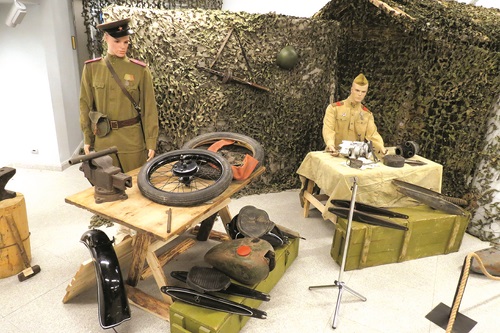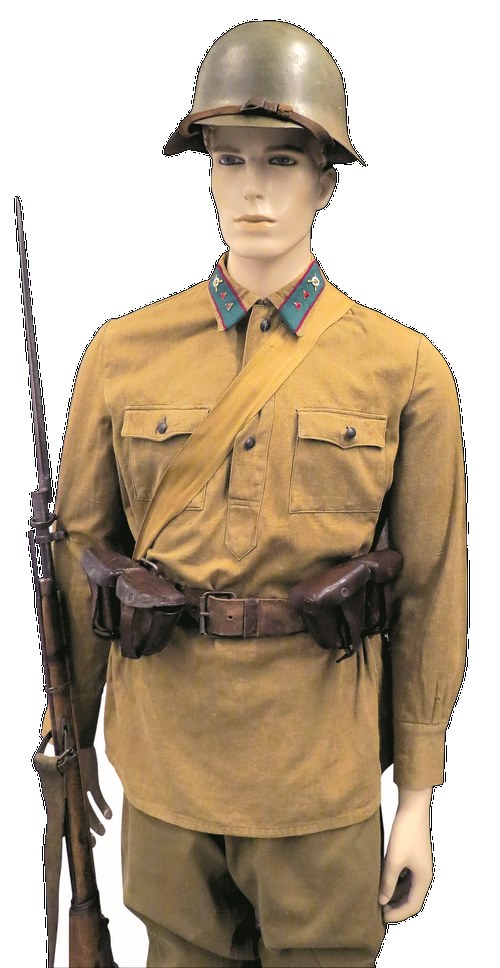The exhibition at the Great Patriotic War History Museum has much to surprise experts, collectors and amateurs alike. In fact, collectors will pay dozens of thousands of Euros to buy artefacts linked to the war years: military motorcycles, ammunition used by the Red Army and Wehrmacht, and medals and insignia. The museum has liaised with collector Alexey Tikunov to create the Traces of War display, which allows visitors to touch original items.

“The exhibition features ten motor cycles from the war and post-war years — including a German DKW and early post-war analogues: the Moskva, Minsk and IZh. It’s no secret that these were produced using German technologies and look similar to German motor vehicles. This 1954 Minsk M1 A motorcycle is a copy of a 1944 DKW RT 125 WH. I discovered it five years ago in Vitebsk, where it was being kept under old clothes in a barn. Its mileage was 5,600km, which makes it an incredible find,” Mr. Tikunov smiles. “Seven of the motorcycles on show are mine and others belong to my friend. I’m proud to say that they’re all in working condition. I’ve personally dismantled, oiled and then reassembled them. The German and Soviet vehicles on show all have original components. I purchased some via European Internet auctions.”

“Just listen to the engines running,” says Mr. Tikunov, switching one on. His delight at the roar is evident. Mr. Tikunov — a retired colonel with the border guards — served for 28 years. Two decades ago, he became addicted to collecting motorcycles and his current collection features dozens of pieces of rare military ammunition from WWI and WWII. He never buys reproduction artefacts, requiring even buttons and military stripes to be authentic.
“Look, this border guard is dressed as was common for 1941. Holding a Mosin gun, cartridge pouches and a 1939 backpack, they faced German troops marching on Brest on June 22nd. This uniform is that of a German guard officer, with winter fur overcoat and a 1942 hat. Traces of blood remain on the reverse, as he received a head wound,” he says. “Visitors can also see how German rangers, police heads and the Wehrmacht’s Afghan division were dressed. We keep a uniform of a Soviet general, worn in 1945, celebrating victory in Berlin.”

The exhibition includes over 200 items of military uniform. As Great Patriotic War History Museum staff explain, “The more time that passes, the more people are eager to know about the Great Patriotic War. They love not simply to hear recollections but to touch the belongings which contributed to the victory. Sometimes, a minor artefact from the war leaves a strong emotional trace. We have talismans worn by soldiers on show too.”
By Vasily Matveev











